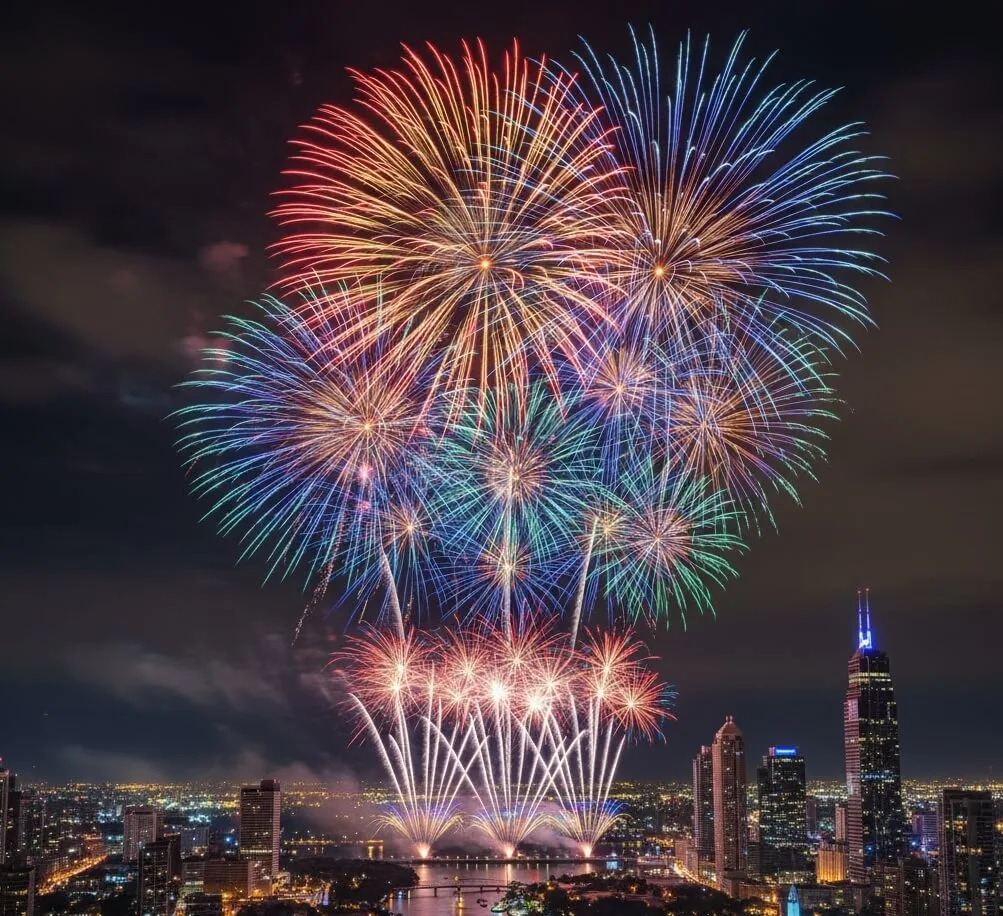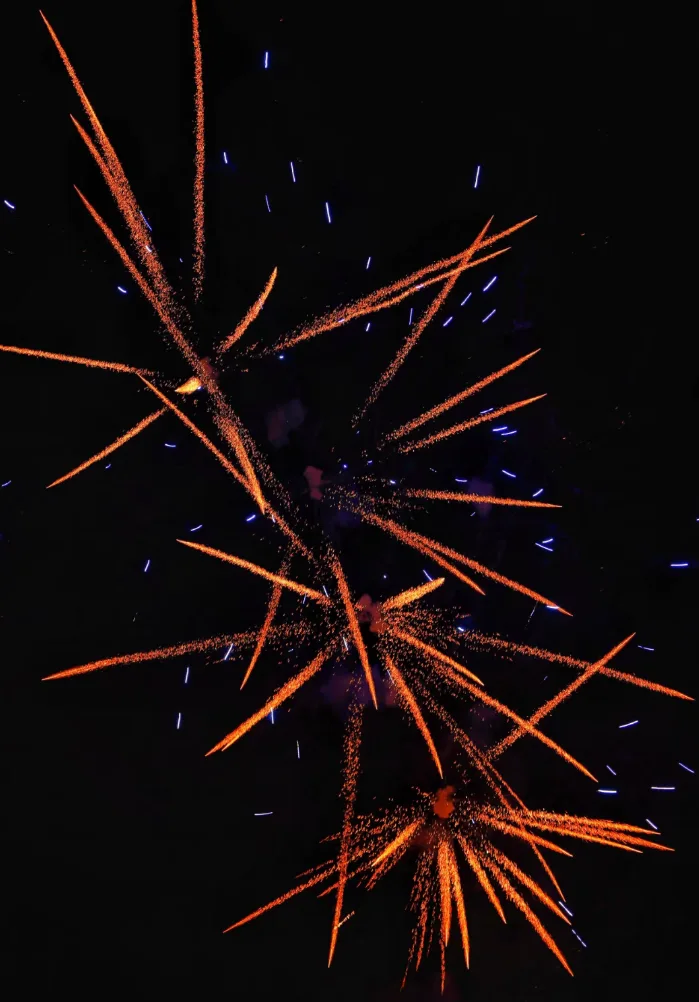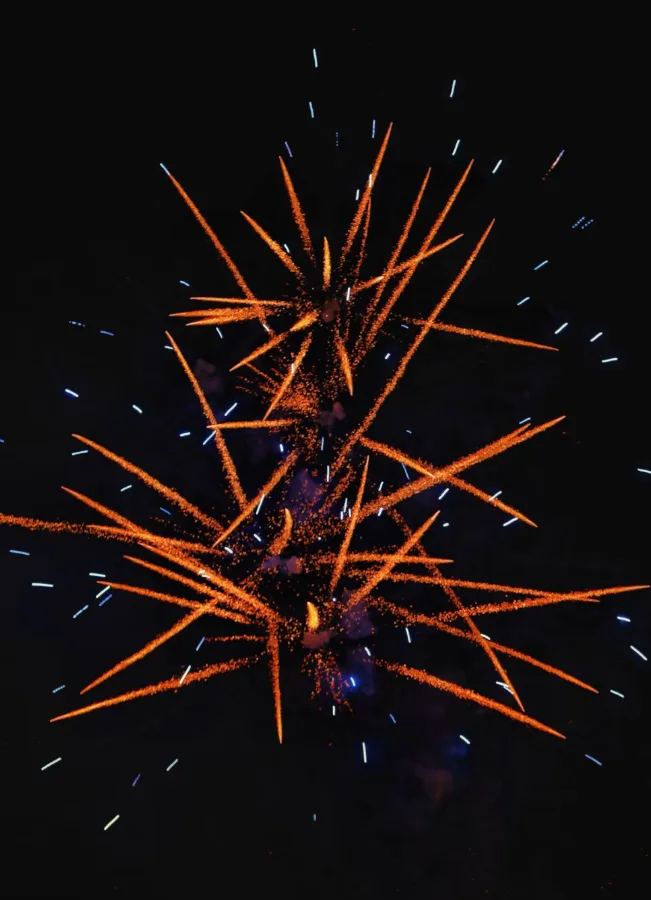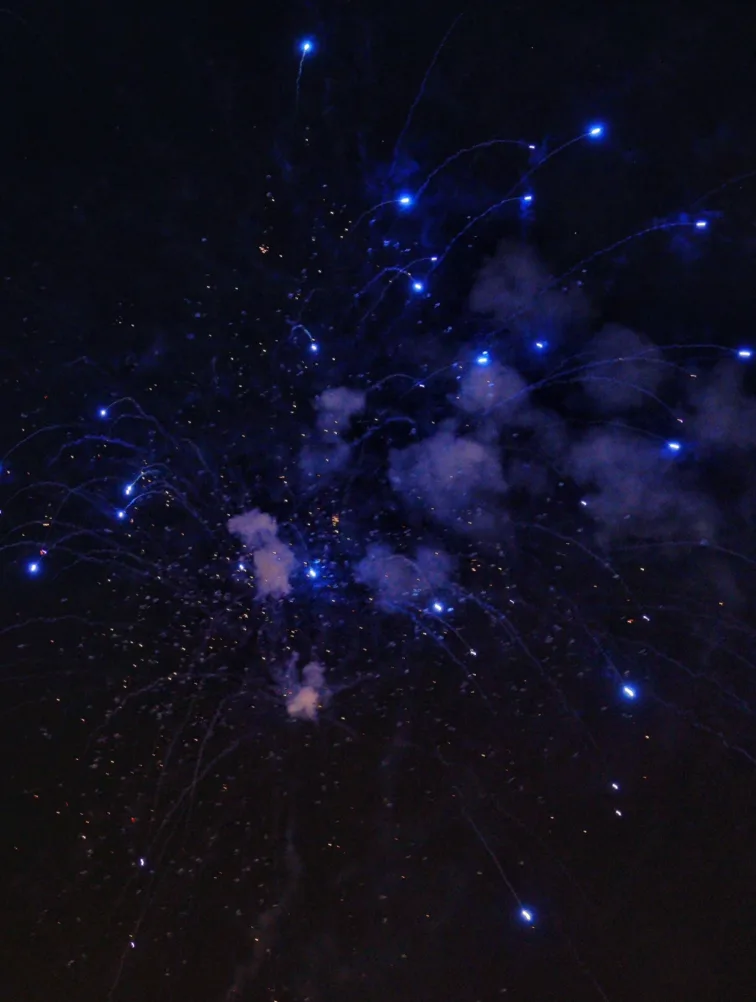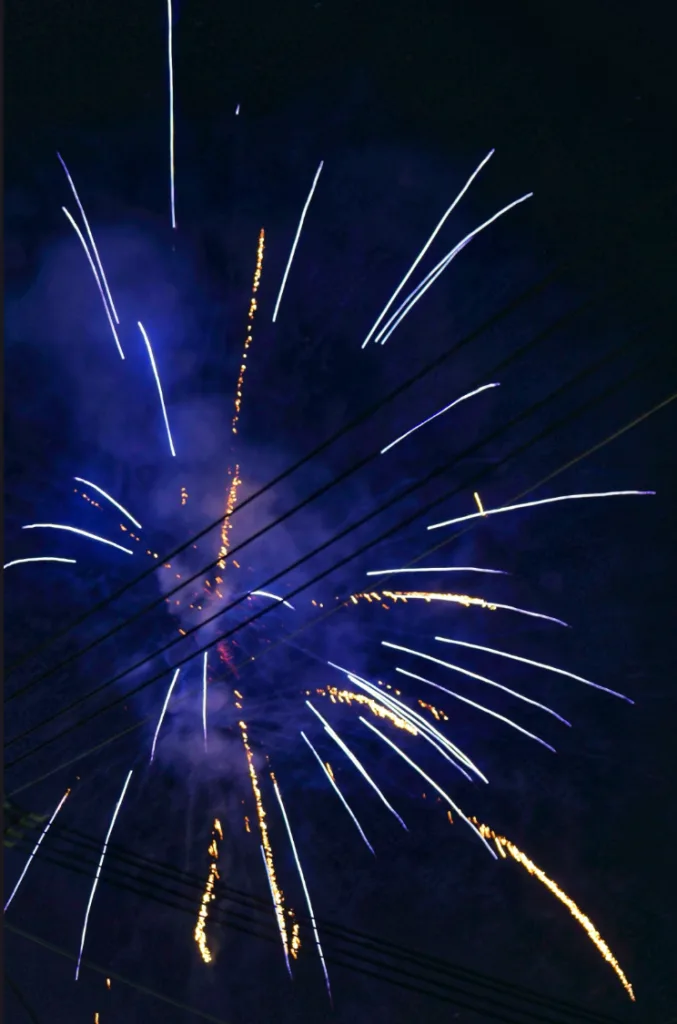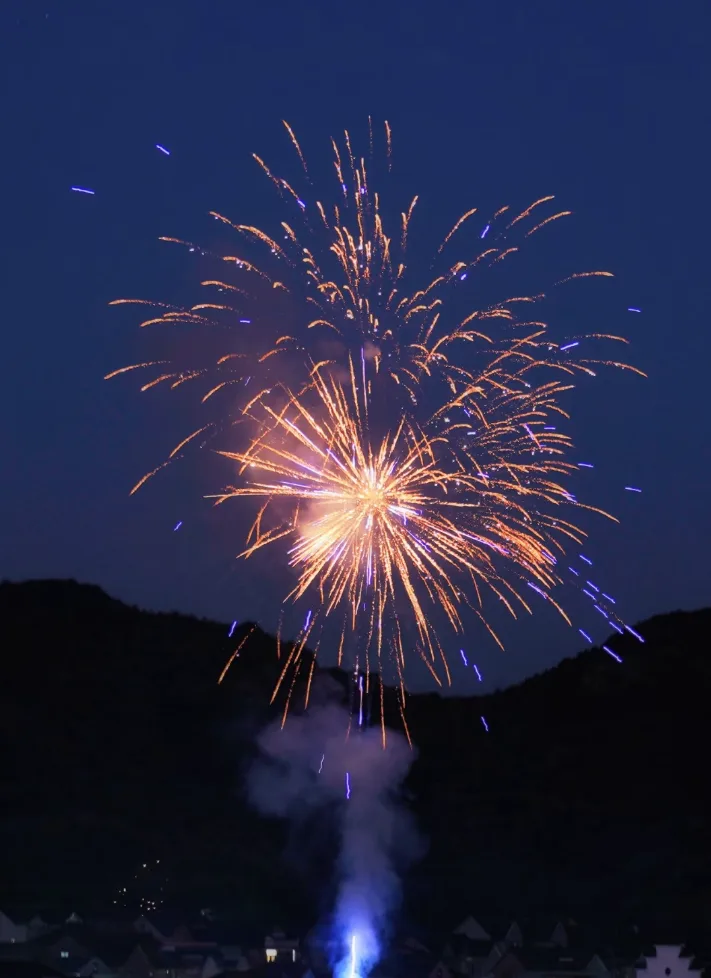Fireworks, that fleeting feast of light and shadow, are one of the most ancient and universal ways humans celebrate. They aren't just a sign of holidays; they are a unique performance that blends art, history, and precise science. When we look up at the night sky, awestruck by the booms and bursts of light, few of us consider the deep cultural roots and meticulous chemical principles behind this grand show.
Echoes of History: From Bamboo Pops to Grand Displays
The origin of fireworks can be traced back to the Tang Dynasty in China around the 7th century, where they weren't initially used for entertainment. Their existence stems from the accidental discovery of gunpowder by ancient alchemists. Legend has it that while searching for an elixir of immortality, an alchemist unintentionally mixed saltpeter, sulfur, and charcoal, creating the highly explosive "fire drug." Even earlier than that, people found that throwing bamboo stalks into a fire would cause them to burst loudly due to the expanding, trapped air; this "exploding bamboo" was used to ward off evil and pestilence.
As gunpowder technology evolved, people began packing it into paper or bamboo tubes, adding simple agents to produce light. By the Song Dynasty, fireworks had developed into various forms and were widely used in court celebrations and folk festivals. Fireworks then spread along the Silk Road to the Middle East and later into Europe, finding further development in Renaissance Italy. Italian pyrotechnicians (firework technicians) invented the technique of precisely encasing color-producing agents and explosive charges inside an "aerial shell," which created the complex, high-altitude patterns of the modern fireworks we know today.
The Secret of Color: The Magic of Metallic Elements
The brilliant colors of fireworks are not magic; they are the result of chemical reactions involving metallic elements. Firework shells are packed with small pellets called "stars," which are a mixture of gunpowder, a binder, and, most importantly, a colorant (different metallic salts). When the firework is launched high and explodes, the intense heat causes these metallic salts to burn and emit light at specific wavelengths.
For example, strontium salts produce a vibrant red glow, barium salts yield a vivid green, and sodium salts create a dazzling golden yellow. Creating blue fireworks is one of the most difficult techniques, as it requires copper salts to burn at a very high temperature while maintaining their chemical structure. It is this precise formulation and combination that allows the fireworks to display such rich visual effects, from single hues to multi-colored transformations.
Sound and Shape: Ingenious Structural Design
A successful fireworks display isn't just about color; it’s about shape, sound, and rhythm. The construction and shape of the shell determine the pattern it creates in the sky. To produce a perfect sphere or "chrysanthemum" shape, the "stars" must be arranged evenly inside the shell casing. To achieve a trailing effect, like a "willow" or "waterfall," ingredients like carbon or iron filings are added to the "stars," allowing the burning residue to continue glowing and descending.
As for the sound, it is dictated by different explosive charges and structural designs. A sharp crack comes from fast-burning black powder, while a high-pitched whistle is typically produced by specially designed hollow tube structures, where high-speed gases create a resonant sound. Modern pyrotechnic shows also use time-delay fuses to control the precise moment and altitude of each explosion, allowing them to be synchronized with music, elevating the display into a multi-sensory art form.
Awe and Respect: Considering Safety and the Environment
Fireworks undeniably bring immense joy, but they are fundamentally explosives, so observing and lighting them must strictly follow safety rules. A simple sparkler might seem harmless, but its burning temperature can exceed a thousand degrees Celsius, far hotter than boiling water, and can easily cause severe burns. Therefore, the primary rule for protecting yourself and others is to maintain a safe distance and leave the launch to trained professionals.
Furthermore, the smoke and debris from fireworks have raised concerns about environmental impact. Modern manufacturers are constantly exploring greener formulations, such as using nitrogen-based compounds instead of traditional chlorine-containing chemicals to reduce smoke, or using biodegradable materials for the casings. The goal is to lessen the environmental footprint without sacrificing the visual spectacle.
Fireworks are a testament to humanity's pursuit of celebration, a perfect blend of technology and artistry. They use a moment of ultimate brilliance to remind us to cherish the present, and with every launch, they show us the wonder and possibility of science. The next time you watch the flower of fire in the night sky, take a moment to consider its journey from the ancient Orient and the beauty of the chemistry within.

